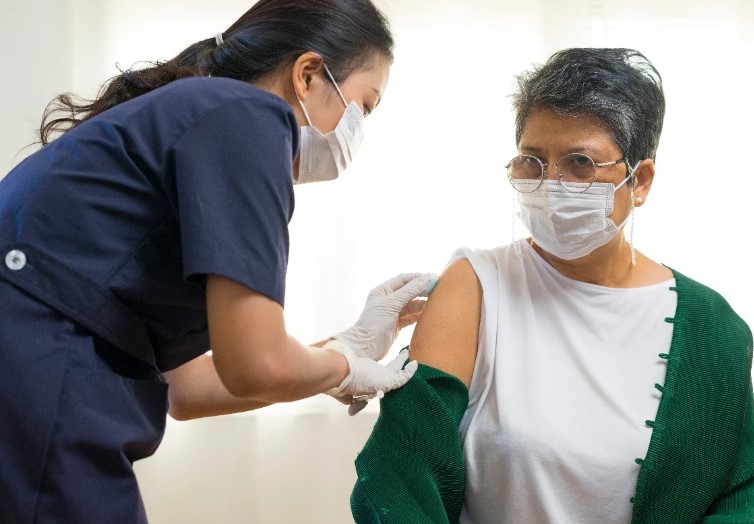

Skilled Nursing
Articles

COVID, Influenza, and Pneumonia Vaccine Updates: What You Need to Know for Fall 2023
October 4, 2023Just when you think you’ve heard everything you need to know about vaccines, there is news. As upticks in COVID, influenza, and pneumonia are either happening or expected, now is the time to update your preparations and plans. Here are some insights to share with patients, team members, caregivers, and others to help them understand the importance of vaccinations going into fall.
COVID
1. COVID vaccines are keeping up with the variants. Both Moderna and Pfizer are updating their vaccines to target an XBB strain – a subvariant of the Omicron variant. The shots will continue to protect against older variants as well.
2. Starting this fall, COVID vaccines move to the commercial market. However, the Centers for Disease Control and Prevention (CDC) has announced they will offer free vaccines to uninsured and underinsured Americans through December 2024. At the same time, these vaccines will be covered by most private health care insurers as well as Medicare and Medicaid.
3. People 65 and older with compromised immune systems are encouraged to receive a second bivalent vaccine (booster), at least until the new monovalent vaccines are available. Additional boosters continue to be free of charge.
4. Paxlovid has received full FDA approval for the treatment of mild to moderate COVID-19.
5. There has been a summer surge of COVID, so it’s important to maintain vigilance and use standard precautions. Long-term care facilities are required to offer the vaccine to residents and staff.
Pneumococcal Pneumonia
1. There are four pneumococcal vaccines licensed for use in the U.S. by the Food and Drug Administration: PCV13, PCV15, PCV20 and PPSV23. In 2021, the 20V vaccine was licensed by the FDA; this or PCV15 is recommended for adults over age 65 as well as those who have never before received a pneumonia vaccine. When PCV15 is used, this should be followed by a dose of PPSV23 about a year later.
2. The CDC recommends pneumococcal vaccines for all adults age 65 and older, even those who are healthy. Older adults who were previously vaccinated
may receive one of the new vaccines through a shared clinical decision-making process with their healthcare provider.
3. Vaccines are considered to work well (one study showed that PCV13 protected 3 out of 4 of people aged 65 and older) but cannot prevent all cases. The shots also help protect unvaccinated people by decreasing the spread of bacteria in the community.
4. Most people who get a pneumococcal vaccine don’t experience any serious side effects. Most common are pain, redness, or swelling at the injection site. Other possible issues include fever, loss of appetite, fatigue, headache, chills, and/or muscle aches or joint pains.
5. Medicare Part B, Medicaid, and most private health insurance cover pneumococcal vaccines.
Influenza
1. Everyone aged 65 and older is advised to get a flu (influenza) vaccine. They need to get vaccinated every year because the vaccines are updated annually due to the constantly changing nature of the flu viruses.
2. People aged 65 and older should get a higher dose or adjuvanted flu vaccine. Studies show that these vaccines are potentially more effective than the standard dose in this population. However, this is a recommendation, not a requirement. Facilities won’t receive survey citations if their residents get lower dose flu vaccines.
3. Studies show the flu vaccine reduces the risk of getting influenza and of experiencing more serious flu outcomes (including hospitalization and death).
4. The best time to get vaccinated is in September or October. It’s not recommended that older adults get the vaccine in July or August because protection may decrease over time, leaving people vulnerable when flu season hits.
5. The high dose and adjuvanted flu vaccines recommended for older adults can result in the same side effects as the standard flu vaccines such as pain, redness or swelling at the injection site, headache, muscle aches and malaise. However, these are generally mild and resolve within 1-3 days.
Stephen Creasy, PharmD, director of clinical services at PharMerica, noted that while it may feel cumbersome to get multiple vaccines, the good news is that it’s generally safe to get them at one time. “They can be co-administered. Just be aware there is likely to be increased injection site soreness.” He stressed that although we’ve been studying COVID vaccines for two-plus years and others for longer, there still may be some vaccine hesitancy among staff, residents, and families alike, so it’s important to continue educational efforts regarding vaccines. Creasy observed, “We are talking a lot more about vaccines and vaccine acceptance. There have been significant resources developed that relate to benefits and risks; and they show that the risks are nominal compared to the benefits.” He suggested the value of identifying advocates or thought leaders in your facility who people respect and listen to, then arm
them with current information they can share with others.
